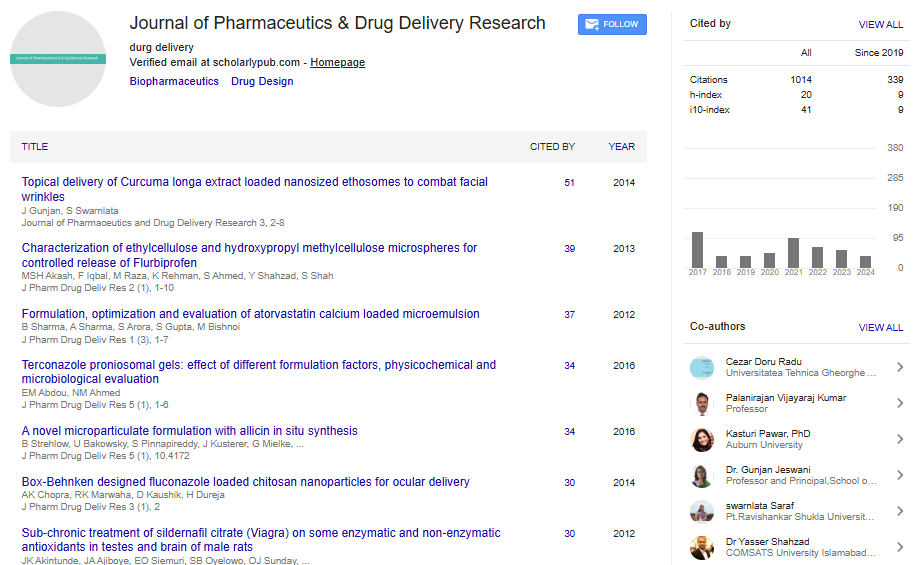Preparation and in vitro evaluation of polymer conjugates actively targeted using RGD-based peptides
Eliska Bohmova, Robert Pola, Michal Pechar, Olga Janouskova, Krystof Zuska and Tomas Etrych
Institute of Macromolecular Chemistry - AR CS, Czech Republic
Charles University, Czech Republic
Motol University Hospital, Czech Republic
: J Pharm Drug Deliv Res
Abstract
RGD-based peptides are well known as structures capable of targeting tumor neovasculature. Recently, actively targeted polymer cancerostatics using linear RGD based peptides has been already described by our group. The main aim of the present work is to compare polymer carriers targeted by linear peptide and by branched form of RGD. Scrambled peptide GRDGG was used as a control. This work is focused on preparation of polymer conjugates based on copolymers of N-(2-hydroxypropyl) methacrylamide (HPMA) with comonomers bearing various RGD-based peptides and a fluorescent label cyanine 5.5 attached to the main polymer chain. First, copolymers containing reactive Thiazolidine-2-Thione (TT) groups with narrow distribution of molecular weights were prepared by RAFT polymerization using dithiobenzoates as chain transfer agents. RGD-based peptide sequences were prepared by standard Fmoc solid phase peptide synthesis using Tenta gel Rink amide resin. Fmoc-NH-PEG(4)-COOH was used as a linker between the peptide and the polymer chain. Coupling of the copolymer with the dye and the peptide via amino groups in an aqueous buffer at pH 8 was monitored by HPLC. The synthesized peptide-polymer conjugates were characterized by SEC. Targeting activity was verified in vitro using Human Umbilical Vein Endothelial Cells (HUVEC) and human prostate adenocarcinoma cell lines (PC- 3) as αVβ3 integrine positive cell lines. Human mammary gland adenocarcinoma (MCF-7) and human prostate adenocarcinoma (LNCaP) cells were used as negative controls. Comparison of each conjugate in terms of endothelium cells targeting efficiency was also monitored. The intended application of these polymer conjugates is selective fluorescent labeling of tumors for endoscopic surgery head and neck carcinomas. Precise visualization of the edge of the tumor is the key factor for removal of the whole tumor without damage of the healthy tissue that often leads to undesired postoperative consequences, e.g. impaired swallowing, articulation or damage of vocal folds.
Biography
Eliška Böhmová has completed her Master’s degree in 2016 at the University of Chemistry and Technology in Prague, Czech Republic. Currently, she studies her PhD at the Department of Biomedical Polymer of the Institute of Macromolecular Chemistry AS CR in Prague. The topic of her dissertation thesis is “Targeted polymeric drugs with enhanced penetration into tumor cells”. Her scientific interests are polymer chemistry, solid phase peptide synthesis, design and synthesis of polymer drug delivery systems for treatment of cancer.
Email: bohmova@imc.cas.cz
 Spanish
Spanish  Chinese
Chinese  Russian
Russian  German
German  French
French  Japanese
Japanese  Portuguese
Portuguese  Hindi
Hindi 
